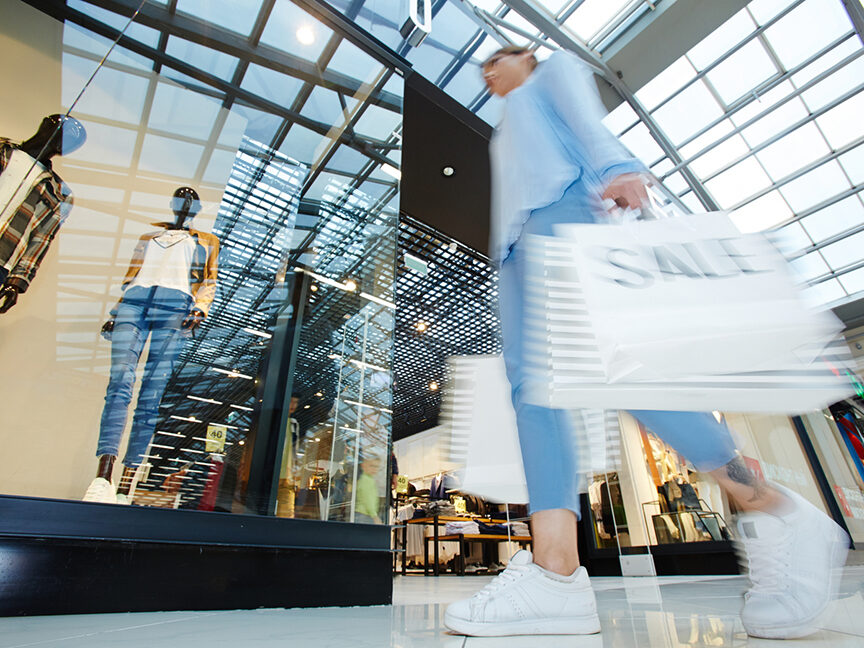
Message to online shoppers who have enjoyed the perk of “100% satisfaction-guaranteed” returns: Your free ride is coming to an end.
E-tailers desperate to reel in fickle customers have long offered free returns, and they’ve paid a steep price for it. They’ve reasoned that it’s better to eat the cost of a return than lose the business altogether. And shoppers have taken full advantage, buying items in multiple colors and sizes, selecting which ones they want, then sending back the rest. In essence, they’ve been treated the web as a virtual fitting room, costing retailers billions of dollars’ worth of logistics expense each year.
The entrenched practice isn’t disappearing overnight, but “we’re seeing little cracks in it,” says Steve Rop, chief operating officer of goTRG, a reverse-logistics specialist. The reason is one of basic economics: For brands and retailers, e-commerce costs, especially those associated with the movement and processing of returned merchandise, are skyrocketing. “If they want to continue to be profitable and grow the e-commerce channel,” he says, “they’re going to have to do something different with the returns process.”
Rop cites a number of early examples, including Zara and Uniqlo imposing a fee for returned items, and Bath and Body Works tightening up on its “no questions asked” returns policy. (Actually, such actions are far from new. Many retailers have long charged “restocking fees” for returned merchandise, but they don’t come close to covering the actual cost of processing it.)
Rop says e-tailers used the lure of free returns to get a foothold in the market. Some even went so far as to incentivize returns, by including re-sealable boxes and pre-printed, prepaid return labels. But when the COVID-19 pandemic hit, locked-down consumers embarked on a buying frenzy. And lacking the option of going to physical fitting rooms, they ramped up the practice of size “bracketing.”
It's not just a matter of apparel. Home-improvement merchandise can be especially pricey to take back, to the point where the seller in some cases instructs the buyer to keep the unwanted item, rather than bear the cost of processing it. Big and bulky items that require assembly, such as those sold by Ikea and Wayfair LLC, present a huge challenge when it comes to returns — even assuming that each part, nut and bolt comes back with the item. Rop has even seen an e-tailer decline to take back a $299 storage container. “Those economics for a retailer don’t make sense.”
One way that retailers might get a handle on reverse logistics cost is to waive the fee if the item is returned to a physical store. That gives the retailer the chance to resell or upsell the customer, or tempt them with additional impulse purchases. Or the retailer might allow “free” returns for customers who sign up for an annual loyalty program, such as Amazon Prime. (Again, whether the membership fee comes close to covering the cost of returns will depend in factors such as the price of the item, and how many times shoppers take advantage of their “privilege.”)
The easiest solution, of course, is to charge more for items sold online than in stores. Restaurants upcharge or impose a fee for deliveries, Rop points out. “Why don’t retailers do that?”
For the most part, returns fees now being imposed by e-tailers are modest in size, and far from reflecting the actual cost of returns. The idea is to psychologically prepare the consumer for paying anything at all for returns — and make them think twice about using the practice on a regular basis.
But retailers will also be tailoring their returns policies to geography and culture. Consumer behavior differs widely from country to country. In Europe, return rates are in the 1%-2% range, while in the U.S. they can be as high as 30% of all online purchases.
In certain cases, retailers will continue to allow buyers to keep items they don’t want, but only for preferred customers and those they believe aren’t gaming the system. “It adds to the loyalty and trust factor,” says Rop. More generally, however, he expects the ”just-keep-it” option to disappear within the next two to three years.
The big push, he says, will be in luring online customers back to physical stores. The idea is to move away from the “spiritless” experience of returning product by mail or courier, in favor of direct interaction with sales staff and the store environment. Even e-tailing giant Amazon.com can encourage returns to stores as a means of boosting both impulse buying and customer loyalty, Rop says. That’s essential at a time when brands are becoming less important to shoppers who are placing more value on price, availability and convenience, regardless of who’s offering it.
E-tailers probably won’t ever be able to cover the total cost of logistics in fees, especially for forward logistics where one-day or even hour-specific deliveries are involved. But they can "disincentivize" the returns portion for shoppers who have come to expect it as part of the retail value proposition. Says Rop: “It’s inevitable that it’s going to come.”







